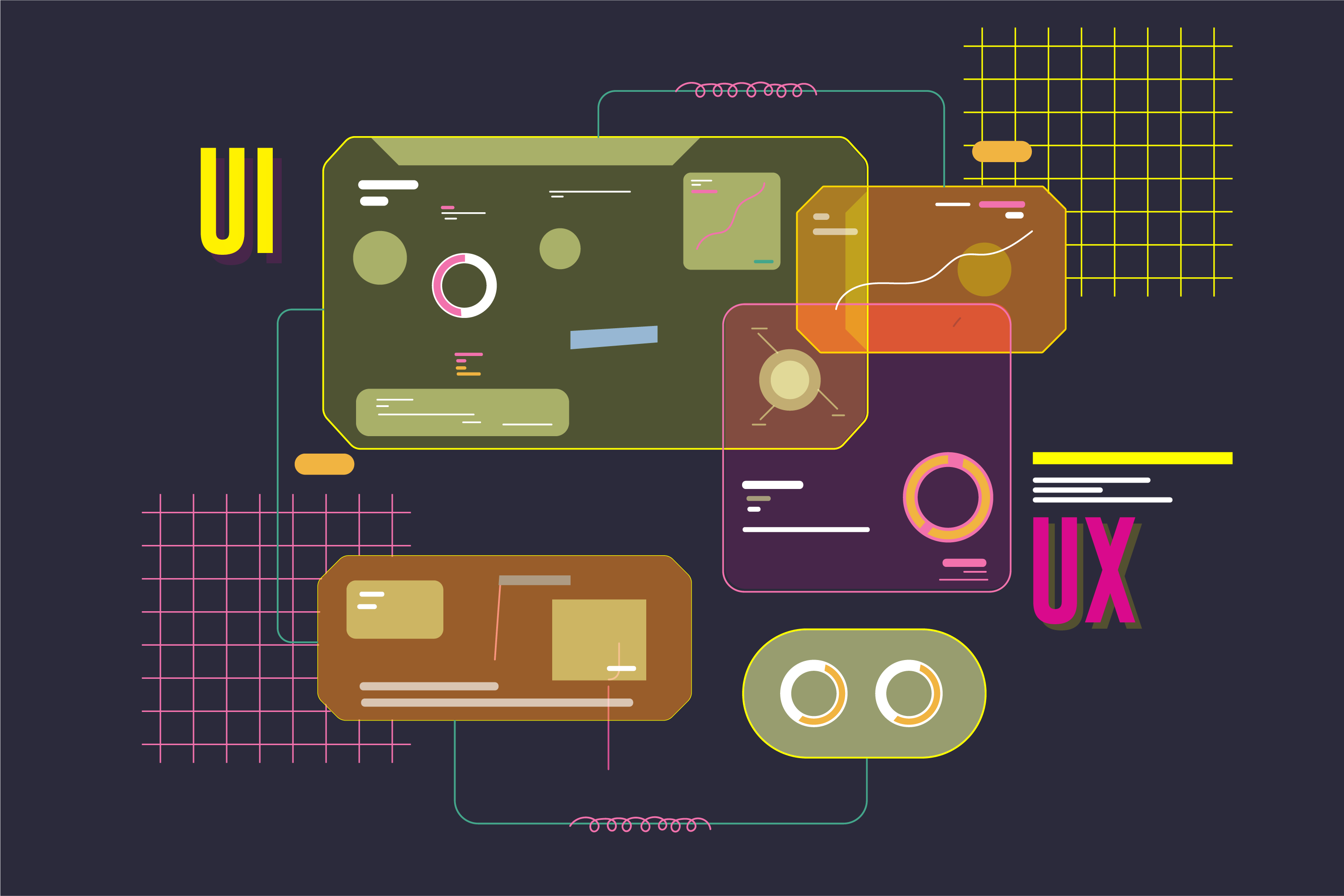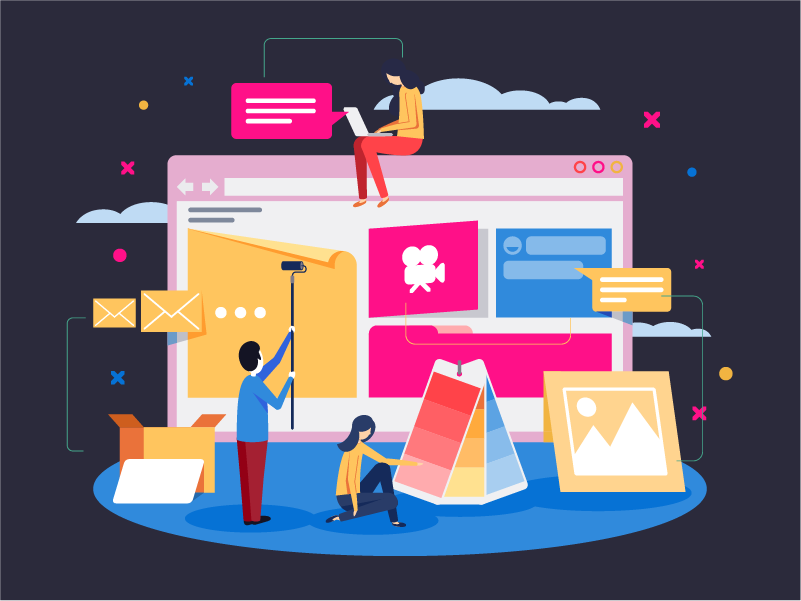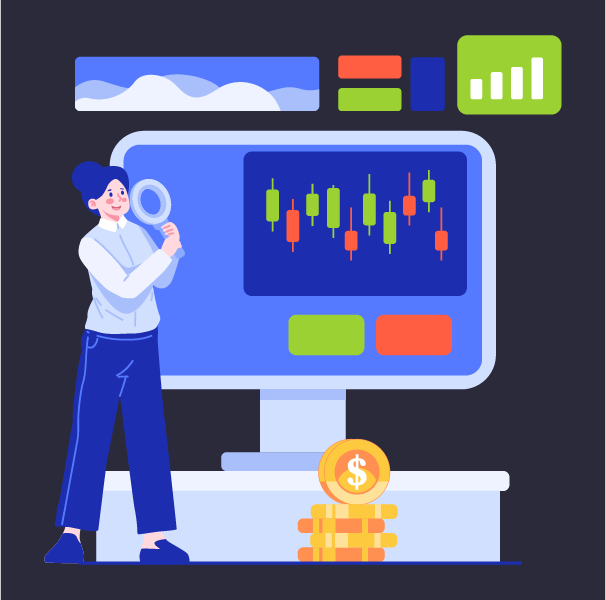The competition to race ahead and build credibility as fast as possible has grown fiercer for start-ups in today's very turbulent business environment.
Product development teams speed up their work internally, while new investors scrutinize. User experience has transformed into a major growth enabler.
Why UX Is a Startup’s Competitive Advantage

There are specific product-related factors, such as user adoption challenges, that can create demanding conditions for early-stage startups seeking to establish a foothold in the markets.
UX is now being regarded as a part of product design and consumer engagement. This comprehensive approach extends beyond digital interfaces to encompass all touchpoints of brand interaction, including visual identity elements like logo design that create the first impression and reinforce brand recognition throughout the user journey.
Additionally, 88% of online shoppers confronted with a bad user experience are unlikely to visit that website again. Therefore, to continue having the growth and satisfaction of the users, UX should be a strategic framework that drives product evolution.
The onboarding process equips the user with the product's value and facilitates continuous retention. Startup teams must, therefore, embed intuitive onboarding experiences and invest in scalable user experience practices that will meet business objectives and encourage long-term customer engagement.
In funding rounds, with increased scrutiny from investors, startups have to take deliberate steps to ensure that their UX actually communicates product credibility and operational maturity. A poorly designed or outdated interface will create negative perceptions.
Designing for Scalability: From MVP to Growth Stage

At this point, investing in a structured design system becomes essential. Such systems support consistency and scalability and enable cross-functional teams to innovate more efficiently without compromising the core user experience.
As startups scale, they need to address more internal changes, such as the increasing variety of user personas with specific needs, workflows, and interaction methods.
The Minimum Viable Product (MVP) generally caters to a single, narrow audience. But as the life of the product rolls on, new personas emerge.
As the volume of users increases, so does the need for performance, where slow load times and inefficient systems gradually reduce user satisfaction. Thus, startups need to adopt a UX strategy that has the flexibility to change with the times.
Companies that prioritize exceptional design practices experience revenue growth and shareholder returns nearly twice as fast as their industry competitors.
Smart Website Redesigns That Enable Growth

Prior to reaching the growth stage, many startups tend to pull all their resources into developing the product. Its website could act as just a placeholder. Initially, that could be enough.
As the business develops, the website is now seen more and more as a strategic business asset. This shift often starts with a complete website redesign - one that goes beyond visual updates and focuses on delivering a user experience that reflects the company’s growth.
The goal should be to use design and UX thinking to replicate the clarity, trust, and intuitiveness users would experience in the product. The public-facing website must grow into a flexible, conversion-optimized hub ready to support long-term business objectives.
Market benchmarks and the increasing importance of digital experience in user acquisition often influence the cost of redesigning a website. However, business leaders must assess how their website aligns with future goals, user expectations, and scalability demands.
ScienceSoft summarized four major web redesign pricing tiers that reflected different stages of website maturity and UX ambition: $100–$1,000, $1,000–$5,000, $5,000–$15,000, and $15,000–$50,000. A small website (up to 50 pages) without integrations will typically fall below $5,000, while a large website (200+ pages) with integrations such as a content management system (CMS), payment services, or live chat is more likely to approach $50,000.
Managers should consider key operational factors such as project scope, UX goals, and future flexibility to determine the right tier. Budgeting for a redesign should be approached with the same scrutiny and foresight as any other core business investment. At this stage, adopting the right tools for startups, whether for UX testing, project collaboration, or performance tracking, can streamline redesign efforts and ensure scalability without unnecessary overhead.
Design That Builds Investor Confidence

A fundamental yet often underutilized strategy in securing investor confidence lies in the startup’s ability to present a compelling UX as part of its overall business readiness.
Integrating thoughtful design into product development is a proactive signal of operational maturity. Startups that embed UX deeply into their workflows demonstrate aesthetic sensibility and highlight strategic alignment across teams.
When investors evaluate a product, they also directly engage with it, assessing how quickly and intuitively it communicates value. This impression at that moment gives an idea of how well the startup understands its customers and how capable it is of delivering against that vision. Even at the Minimum Viable Product (MVP) stage, a polished and user-friendly interface signals that the founding team prioritizes customer experience alongside technical functionality.
Thus, UX becomes a strategic lever for the execution of which demonstrates strong leadership, empathy towards users, and commitment to long-term scalability if executed well.
Similarly, when investors evaluate it, UX can serve as a critical barometer of product readiness. A well-crafted interface can demonstrate that a startup can deliver on its vision and user expectations. In this context, UX becomes a metric of execution discipline.
When a product’s design appears unclear, it raises concerns around rushed development cycles or misaligned priorities. These indicators may discourage investor trust.
In competitive funding environments, where many companies pitch similar features and market opportunities, the startup with the most refined and intuitive user interface often emerges as the preferred investment choice.
Preparing for Pre-IPO: UX as a Maturity Signal

A clearly structured UX framework plays a vital role in supporting product readiness when approaching pre-IPO stages or securing late-stage investment.
Utilizing advanced design systems and a unified customer journey across platforms enables startups to align with investor expectations. Integrating a scalable product infrastructure that can withstand diverse market demands is also necessary.
For investors, particularly in private markets, a product’s UX becomes an analytical lens through which operational discipline and growth potential are evaluated.
Final Thoughts: UX as a Catalyst for Business Success
The ones that must press ahead know that user experience creates business-winning conditions. Since tracking down the success behind any great design, companies must analyze their users in real time as they interact with the product.
Startups that ceaselessly pursue improving user experience will have the highest chance of retaining users and thus will build long-term value because of clear operations and great products.
Ready to launch your UX design project? Receive dozens of custom design ideas from vetted designers worldwide, refine your favorite, and bring your vision to life through DesignCrowd.
Alternatively, if you're looking for quick, affordable control over your brand assets, Design.com offers ready-to-go logos and service-focused website templates.
Browse thousands of pre-designed logos, customize colors, fonts, and taglines instantly. With Design.com, you get the flexibility to build and test your UX identity at your own pace.
A successful 20-year career in IT has brought Pavel Ilyusenko to the position of Head of PMO at ScienceSoft. Pavel sets up the environment and elaborates on best practices for project management activities.
Original Artwork by Selwyn Legaspi
Written by DesignCrowd on Monday, August 11, 2025
DesignCrowd is an online marketplace providing logo, website, print and graphic design services by providing access to freelance graphic designers and design studios around the world.

